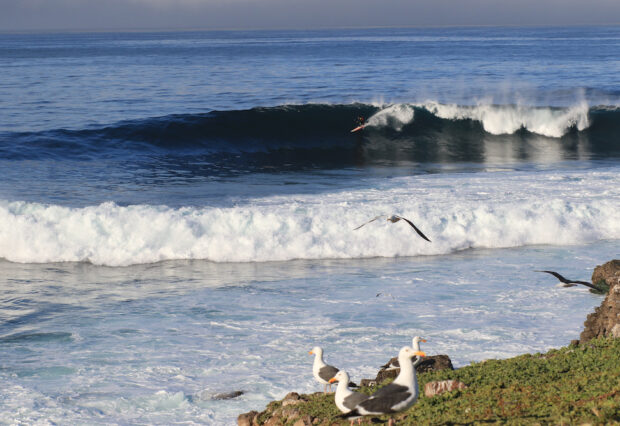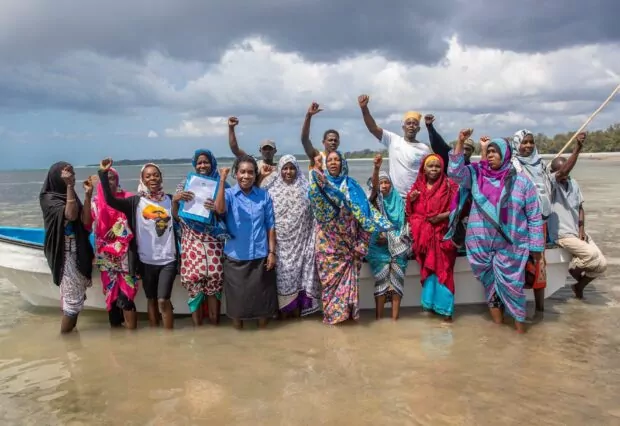As the US and Canada experience heat domes, Southern Africa enters the third year of drought and China and Europe suffer devastating floods, the 100-day countdown to COP26 begins. Failure is not an option. We must agree how the world’s temperature rises can be controlled and reduce the danger of acceleration. At the same time, we need to support communities who are most at risk from the adverse impacts of climate change to develop and maintain resilience. We must all become climate adapters.
It may surprise some to know that we have an asset, perhaps the planet’s greatest asset, which can help us do just that. You would think that any such asset would be fiercely protected; its resources secured and the elements that give it value and resilience made safe; that companies and individuals would take advantage of the investment opportunities it presents for ESG reasons, for security or simply to make financial returns while Governments would work together to ensure its sustainable future. That asset is the ocean and while, for so long, we have viewed it as simply a resource bank from which to only extract, in recent years that view has changed.
When the WWF Report, Reviving the Ocean Economy: The Case for Action placed a value of US$24 trillion on the ocean, it raised eyebrows. But by valuing the ocean in this way, it highlighted the worth of the blue economy not only for resources to be extracted but in returns which could be made. It, therefore, created a baseline for driving investment into coastal and marine natural capital.
Frankly, failing to invest would be inexcusable. The Association of British Insurers reckons that coastal floods and storm surges cost the world between US$10bn and US$40bn a year. And according to the Global Commission on Adaptation, by 2050 rising sea levels and extreme weather are expected to cost coastal communities around the world up to US$1 trillion annually.
These are startling figures and a significant cost to the global economy proving once again that climate risk and ocean risk, together, equal financial risk. Rising sea levels and storm surges endanger people as well as the often high-value physical infrastructure on which they depend.
Public and increasingly private capital is realising that there are clear incentives to invest in the ocean. Firstly, to protect existing assets including valuable infrastructure, from becoming either uninsurable or worthless. Secondly, to look to the future and seek returns from innovative and investable products and projects.
This is where the Ocean Risk and Resilience Action Alliance or ORRAA comes in. ORRAA is an international alliance connecting finance and insurance, governments, environmental organisations, academics and climate adapters. Our members include Deutsche Bank, AXA XL, Swiss Re, Willis Towers Watson, the Governments of Canada and the UK, WWF, The Nature Conservancy, Ocean Unite and the Global Resilience Partnership. Our purpose is to convene and drive investment into coastal and marine natural capital; mitigate risk and build resilience in communities adapting to climate change.
We are already having an impact through our initial projects and programmes, including through supporting the development of a new blue carbon resilience credit project and the creation of a ground-breaking Coastal Risk Index that integrates the protective benefits of coastal ecosystems into insurance risk models. Risk management work we have undertaken includes developing pathways to reduce access to insurance for vessels engaged in illegal, unreported and unregulated (IUU) fishing, and the identification of adverse impacts on the most vulnerable sectors of coastal communities such as women and girls in Least Developed Countries and Small Island Developing States. Importantly, through our Innovation Challenge, we are also surfacing a pipeline of new small and medium sized projects and products which, through mentoring and development, can then be scaled to offer future investment opportunities.
Today, with just 100 days to go before COP26 in Glasgow, we need a new generation of financial backers from institutional investors to family offices, and from banks to insurers to put capital to work for the ocean. We are targeting $500m of investment by 2030 to pioneer new financial and insurance products and tools designed to channel capital, secure returns and drive investment into ocean focused Nature-based Solutions – fundamental to tackling the threats from climate change, protecting biodiversity and building resilience. We are also looking to Governments and financial regulators to put the right enabling regulatory framework in place to encourage private capital to move in this direction. This way, returns will be dependent on biodiversity protection, natural and marine capital security and stabilisation of the global temperature. A healthy and prosperous ocean future can then be assured for us all.
Karen Sack Chip Cunliffe
Co-Chair, ORRAA Co-Chair, ORRAA




